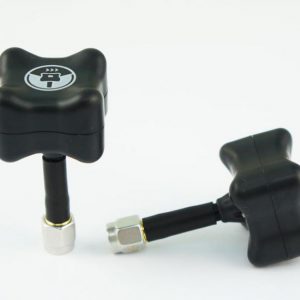Beschreibung
Orqa FPV.P1
Team Orqa is a group of FPV enthusiasts and engineers on a mission to design and build World’s best FPV gear. Orqa FPV.P1 was designed and manufactured to be the best patch antenna in the entry-level segment.
The RF design of P1 is finely tuned so that the optimum range is exactly between 5.65GHz and 5.97GHz, with the best results between 5.7GHz and 5.9GHz, and peak performance at 5.8GHz (5.803 GHz, to be exact).
We have aimed to achieve exceptional VSWR with a solid cross-polarisation attenuation. VSWR is a proxy to power transmission efficiency (how well the antenna delivers the RF energy to the receiver), and cross-polarisation attenuation tells us how resillient antenna is to radio pollution from the multipath wave propagation (reflections of the original signal) and cross-polarisation transmitters (radio sources transmitting on the opposite polarisation).
At 5.803GHz, the P1 measures an exceptional VSWR of 1.174 with a very good level of worst-case cross-polarisation attenuation of 15dB. Between 5.7GHz and 5.9GHz, the VSWR is well below 1.2 with good cross-polarisation attenuation; towards the edges of this band, VSWR goes even below 1.1, but with weaker attenuation compared to 5.803GHz. Across the entire optimal frequency range, P1 measures VSWR within the limits of the optimal range (below 1.4).
Patch Antennas
Patch antenna is a microstrip antenna originally described by Howell in 1972, a type of directed radio antenna consisting of two sheets of metal mounted on top of each other.
A smaller flat rectangular sheet called ìpatchî is positioned over a larger sheet of metal called ìground planeî, forming a resonant piece of microstrip transmission line with a length of approximately half the wavelength of the radio waves.
The patch antenna is used at frequencies between 300 MHz and 300 GHz, as the wavelengths are short enough for the patches to be small enough.
Patch antennas are widely used because of ease of fabrication on printed circuit boards.
Read more on Medium article
Key Features
- 6dBi Gain
- Right Hand Circular Polarization (RHCP)
- 5.65 GHz – 5.97 GHz
- 120° beamwidth (6 dB)
- 52 x 63 mm (max. dimensions)
- RP-SMA Anschluss
Package Includes
- 1x Orqa FPV.P1








